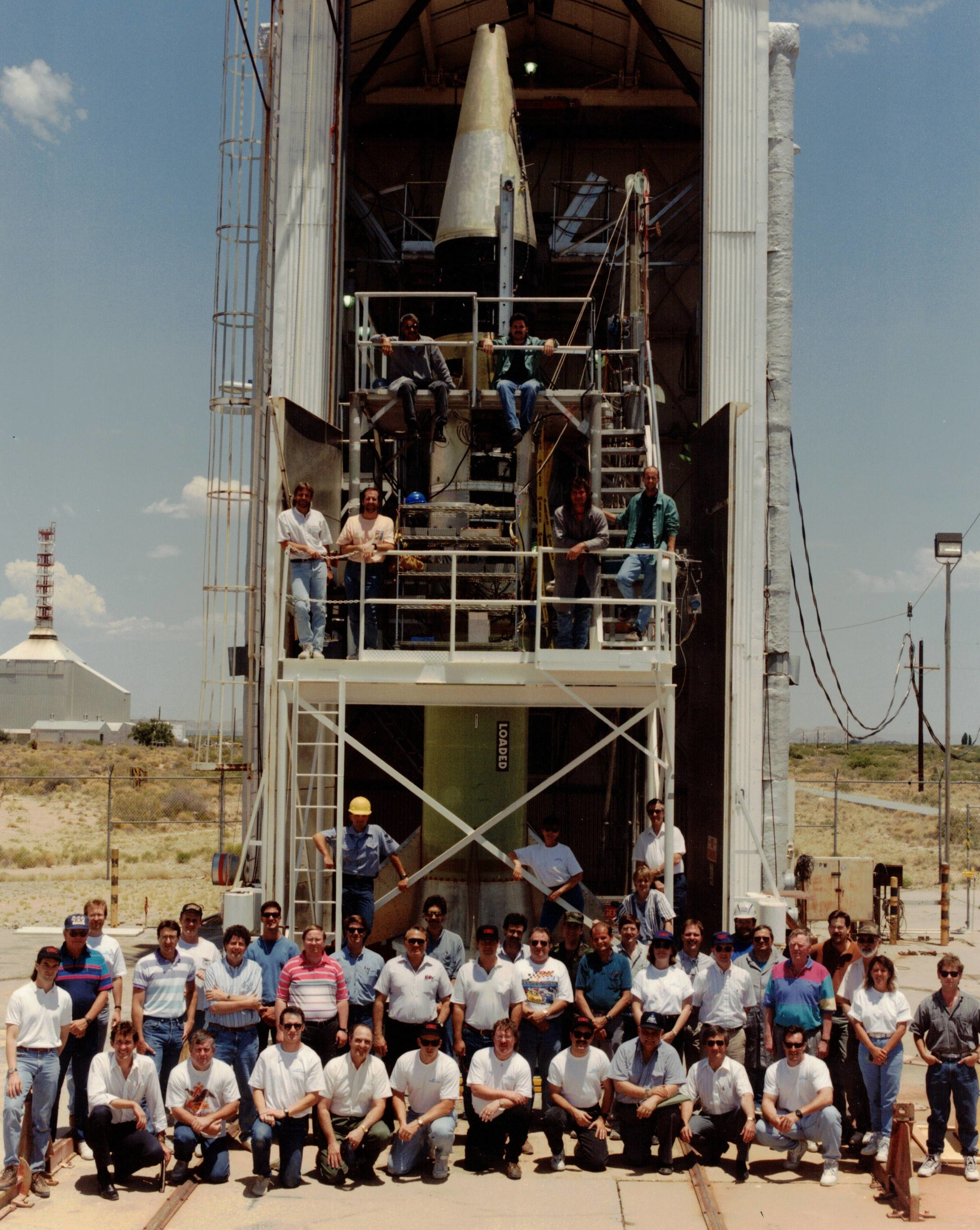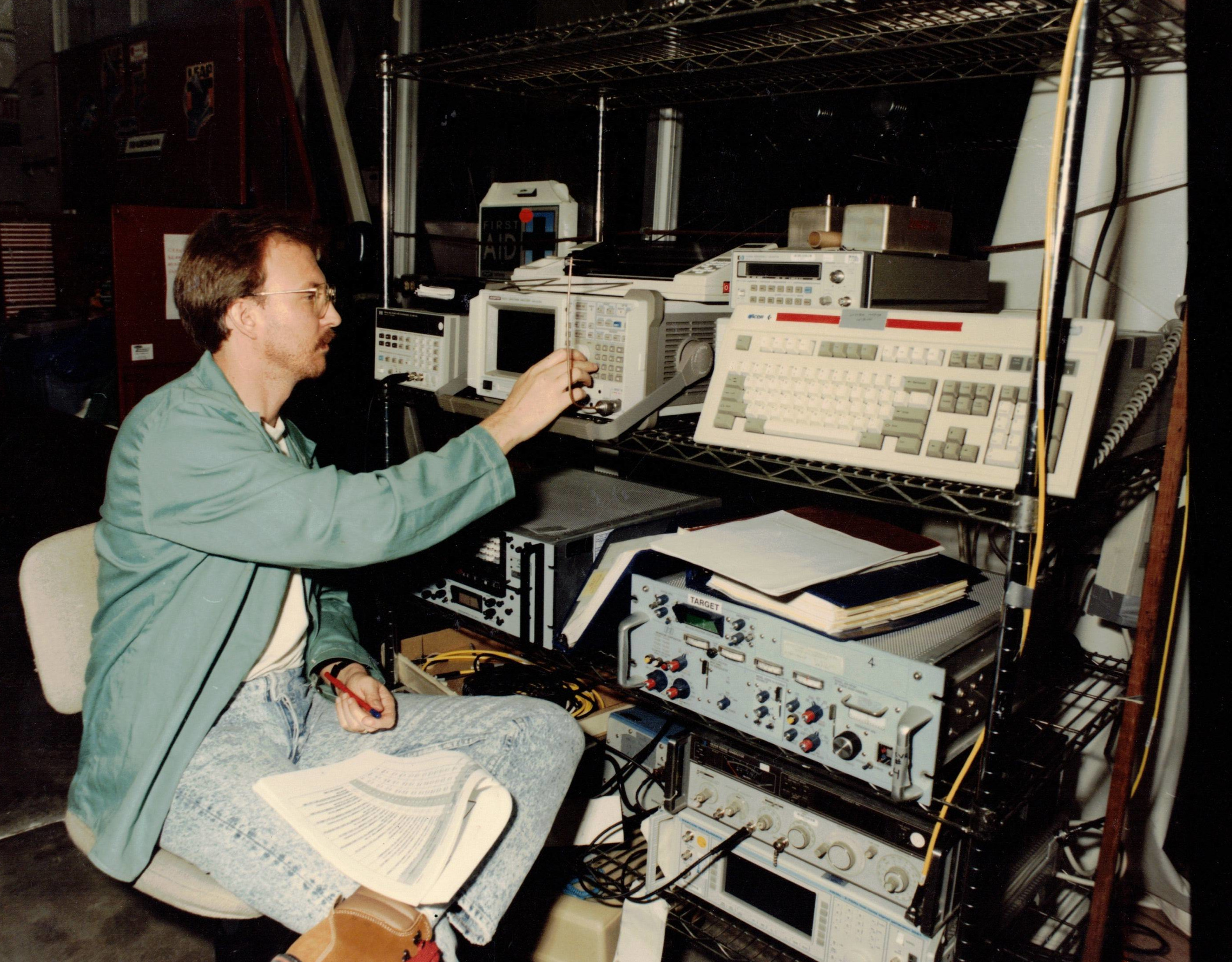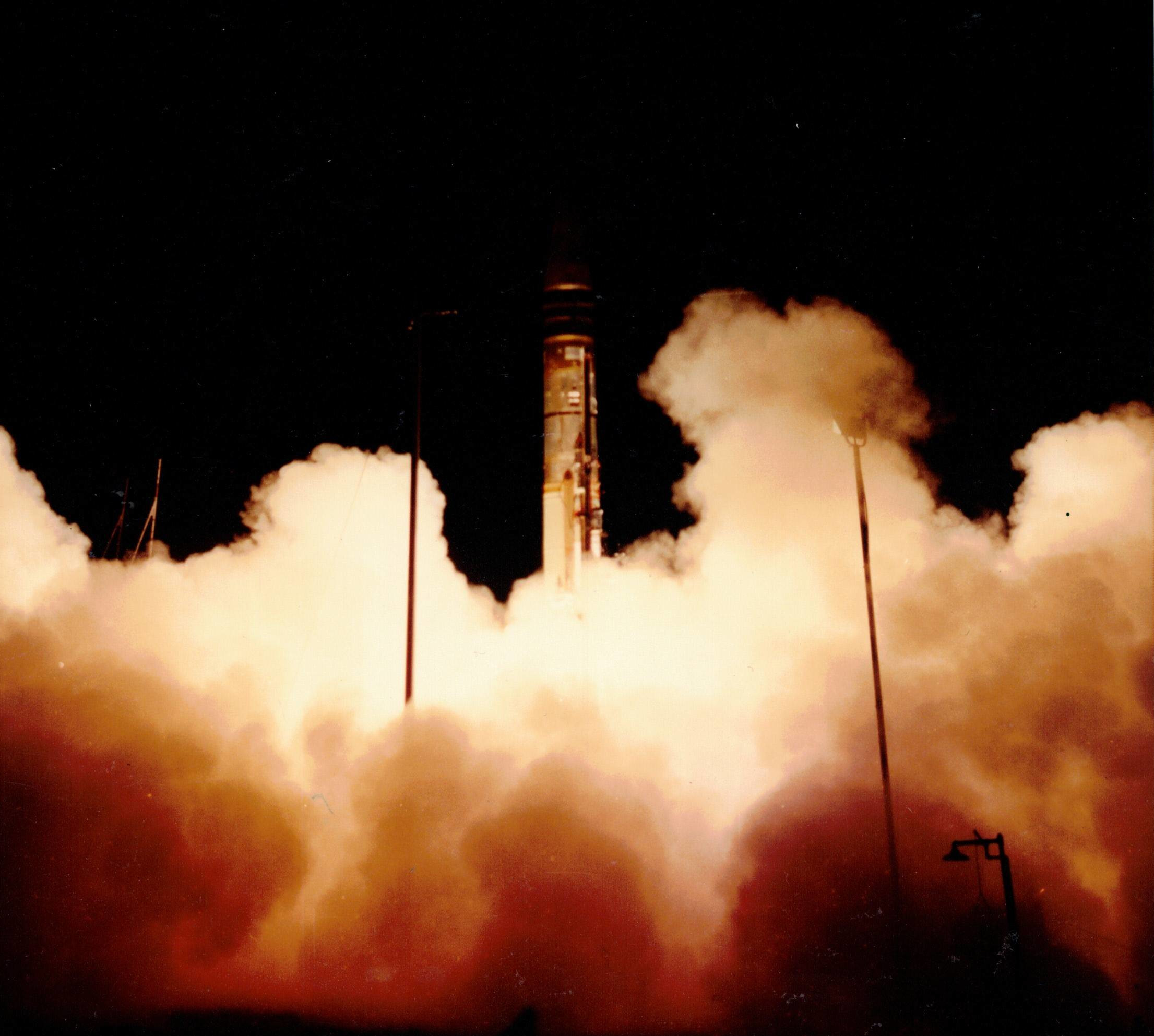RF Systems Engineer and launch team member for LEAP 3 Kinetic Kill Vehicle space intercept testing at White Sands Missile Range:
 The main thing I did at OSC was serve as the sole RF Systems Engineer on the Lightweight-Exo-Atmospheric-Projectile (LEAP) program's third space intercept scenario test launch, which was called LEAP3. If you Google the phrase 'Lightweight Exoatmospheric Projectile' you can find out much more about this program, but I'll give a quick overview here.
The main thing I did at OSC was serve as the sole RF Systems Engineer on the Lightweight-Exo-Atmospheric-Projectile (LEAP) program's third space intercept scenario test launch, which was called LEAP3. If you Google the phrase 'Lightweight Exoatmospheric Projectile' you can find out much more about this program, but I'll give a quick overview here.
The Strategic Defense Initiative (SDI), commonly known as 'Star Wars' program was proposed by Ronald Reagan and planned to use a mixture of technologies to ensure that no country could successfully land a nuclear warhead on the continental United States. There were different technologies used for different phases: satellite systems which would immediately detect launches, space-based laser systems which would try to destroy the ballistic missiles during the 'boost phase' while they were taking off or in the early part of the 'ballistic phase' where they were flying through space, and a system to intercept the warheads just before they re-entered the atmosphere at the end of the 'ballistic phase' before they could strike their targets.
We were involved in testing hardware for this last phase, and the final system (which is currently deployed and in use) called for rockets to be equipped with 'Kinetic-Kill-Vehicles' (KKVs). When an incoming warhead was detected, ground or space-based radar systems would track the incoming warheads and attempt to determine which objects were warheads and which were decoys. Once a warhead was detected and tracked, one of the rockets (which could be launched from either a ground location or a ship) would be launched to the vicinity of the warhead in space, and when it got close, would eject the KKV.
The KKV, which is essentially a fully-autonomous flying robot about the size of a toaster oven, has its own sensors which can track the warhead and an on-board propulsion system so that it can fly itself to a position in front of the incoming warhead. The warhead runs into the KKV and the kinetic energy of the warhead's motion destroys both objects in the collision.
As you can imagine, this is a difficult thing to achieve. Multiple companies were bidding for the contract to produce the KKVs for the U.S. military and our job was to conduct a series of 30 minute space missions each one testing one of the KKV company's prototype KKVs in an actual space intercept scenario.
These intercept scenarios were designed to simulate all aspects of an actual incoming warhead, but starting with slower intercept speeds and shorter distances, moving up little by little through the launches until the final tests were at the full speeds and distances expected in the actual scenario.
The early missions were conducted at domestic launch facilities like White Sands Missile Range in New Mexico, Wallops Island in North Carolina, Barking Sands Test Facility in Hawaii, and the later tests with higher speeds would move to Kwajalein Atoll and Wake Island in the Pacific.
My launch mission, LEAP3 was conducted at White Sands Missile Range.

As the RF systems engineer, while we were designing the rocket in Chandler, my responsibilities included:
- Managing everything related to the Radio-Frequency (RF) systems for the mission, which included 14 different radio links in operation. This included multiple data telemetry systems between the simulated warhead spacecraft, the spacecraft which housed the KKV, and the KKV itself, multiple camera systems and video transmission systems, radar transponder systems to aid ground tracking of the spacecraft, command-destruct radio systems which would allow the launch range to destroy our spacecraft if we went off-course, and a specialized miss-distance radar system to detect how close spacecraft were to each other during flight.
- Given information about the trajectory and possible ground stations we could requisition at White Sands, calculating the signal-to-noise ratio throughout the mission, determining the transmission power required and working with the system electrical and system mechanical engineers to make sure we had sufficient electrical power and could install and weight-balance the RF system parts on the mechanical structures of the rocket.
- Measuring antenna pattern information for various antenna systems and simulating antenna patterns using software.
- Ordering and in some cases designing custom hardware for the RF system including transmitters, receivers, antennas, and cabling.
- Testing all received RF hardware and installing the hardware on the rocket.
- Working with White Sands Missile Range to requisition ground station support for the mission and filing lots of reports and paperwork.
- Accompanying the rocket as part of the 8-week mission team at White Sands where we conducted further tests on the rocket and the interfaces of the rocket with the missile range. During launch, I had a specific role (which is classified, so I can't provide details). But here is a photo of our actual launch...
